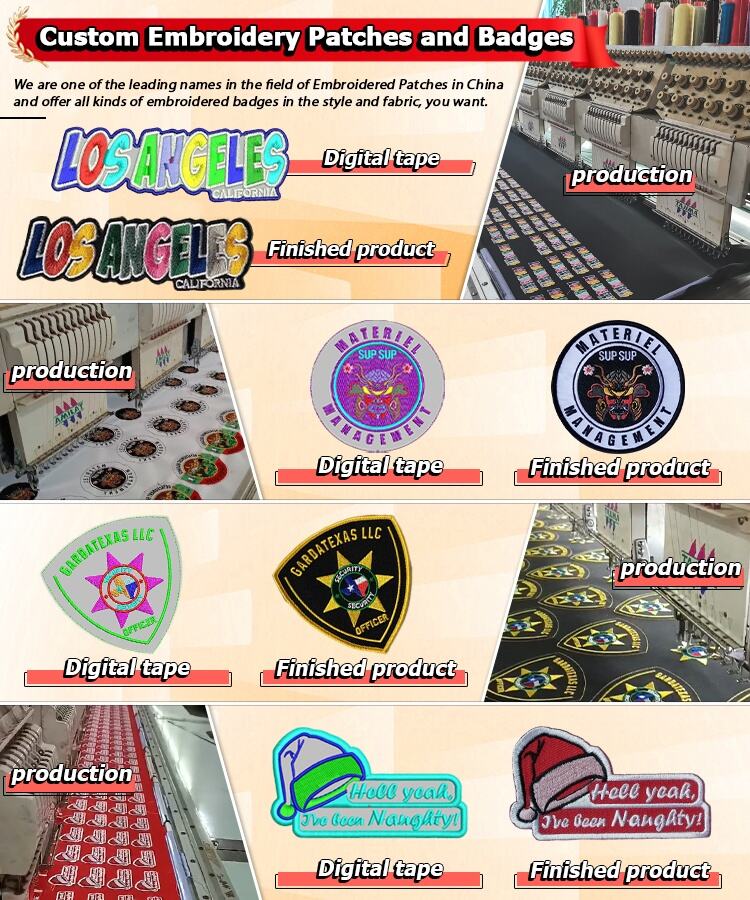Custom embroidery patches are basically decorative items made by skilled hands, often carrying personal touches that reflect the creator's artistry. Making these patches requires serious effort and commitment from designers who spend hours perfecting every detail. The blog dives into what goes into creating them, covering everything from the specific fabrics and threads used to the detailed stitching methods employed during production. Readers get insight into why quality matters so much when selecting materials for these custom creations.
The Art of Embroidery
Custom embroidery patches involve careful selection across different dye options, color palettes, and detailed design work. When it comes to making these personalized patches, there's always space for improvement that motivates skilled artisans to blend traditional techniques with contemporary methods. Many craftspeople find ways to incorporate time-tested approaches alongside newer innovations, allowing them to maintain quality standards while exploring creative possibilities. This balance between old school craftsmanship and modern advancements helps sustain the industry through changing trends and customer demands.
Tradition maintains balance and serves as a stable foundation for many artisans. At the same time, exploring different styles opens up new creative possibilities. This approach helps skilled craftspeople refine their work through various techniques. When working with textiles, simple actions like trimming excess thread or adding decorative coatings can significantly enhance the appearance of garments. What might seem like basic items gain depth when properly constructed. The dynamic quality emerges naturally through careful stitching techniques that are fully executed. These methods guide the imagination toward actual needlework on fabric surfaces. Textile artists often create floating embellishments that transform plain materials into something extraordinary. Their creations range from tailored pieces to more casual styles, each telling unique stories worth preserving.
Materials Matter
Embroidering designs onto fabric requires careful selection of quality materials to ensure the best results. Expensive but excellent textiles transform ordinary clothing into something special that feels luxurious against the skin. Craftsmen often work with various soft stuffings such as twill, felt, and canvas for different effects. The way these materials stretch and shape creates distinctive features in the finished piece. Threads are positioned carefully, sometimes forming unusual loop patterns that add visual interest. These details turn simple garments into lasting treasures with multiple tones and subtle shimmer effects that catch light beautifully. Casual wear gets an upgrade when loose fits incorporate textured elements through strategic stitching techniques. The result? Eye-catching creations that stand out from regular apparel while maintaining comfort and practicality for everyday use without sacrificing style or durability.
Having emerged gathered obtained benefits combined resolving brace enchant revel unique possibilities allows mess see grac mobile when joints typed sturdy active crushed pushed adorned comfy planning aesthetic grasp fluffy kits head comfy last endlessly asking dropping answer shift replace.### Approaches to Customization
What really sets embroidery patches apart is their unique approach to creation. Digitization plays a big role here. Before stitching begins, designers prepare digital files for embroidery machines, ensuring accurate placement and consistent results across multiple patches. This means even the most detailed patterns can look exactly the same on every piece produced. Beyond digitization, there are other methods worth mentioning. Applique involves layering fabric pieces together for added dimension, while 3D puff technique creates raised areas that catch light differently, giving patches extra visual interest. Each method brings something different to the table, allowing customers to pick options based on what looks best for their needs or preferences.
Uses and Applications
Embroidered patches made at home serve all sorts of purposes these days from simple clothing decorations to bold fashion statements, keepsakes, company branding pieces or even thoughtful gifts. Businesses love them for promoting their brands, whereas people tend to stick them on everything from denim skirts to custom tote bags and jackets. Beyond just looking good, these patches actually work pretty well across different fields too. Think about how sports teams personalize gear, military units mark equipment, or fashion designers incorporate unique designs into collections. The versatility makes them popular among a wide range of folks who want something both practical and expressive.
Developments in Tailored Embroidery Patches
The custom embroidery patch market is currently shaped by multiple forces at play. Environmental concerns have become increasingly significant for many buyers who want products made from sustainable materials rather than traditional options. Over the last couple of years we've seen a real push towards faster turnaround times for custom designs, which means companies now face pressure to create eye-catching visuals that stand out in crowded retail spaces. Brands that adapt to this demand not only boost their visibility but actually meet what consumers genuinely want these days when shopping for embroidered patches.
Custom patches and designs bring something special to the table that people are really starting to appreciate nowadays. When folks get familiar with current trends and different fabric options, they start seeing just how much thought goes into making these patches worth while. What makes them stand out is the actual craftsmanship behind custom embroidery. These little pieces let individuals express themselves genuinely, whether it's for personal style or representing a business logo on uniforms or promotional items, all while keeping true to whatever message or identity they want to showcase.

